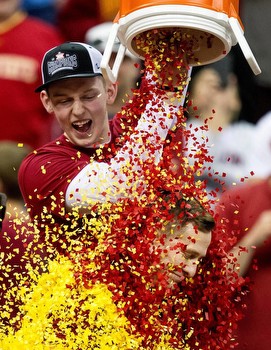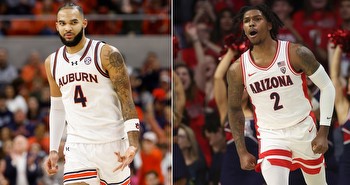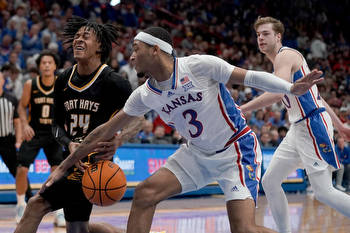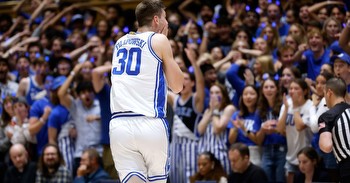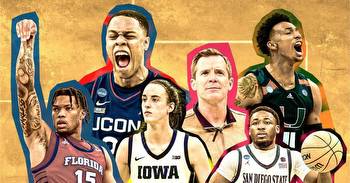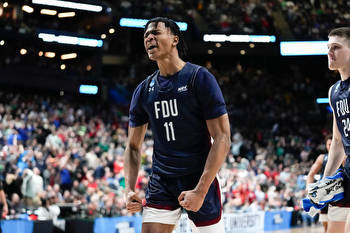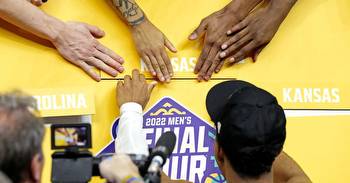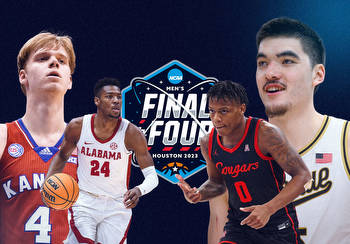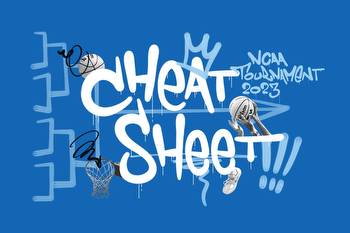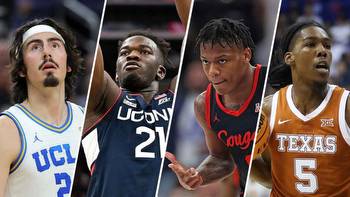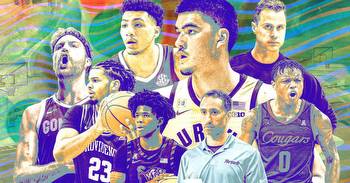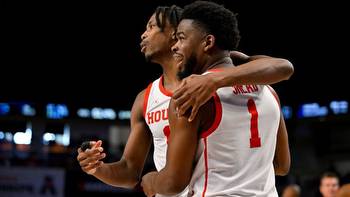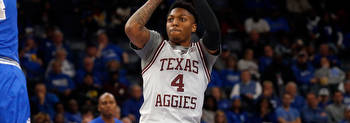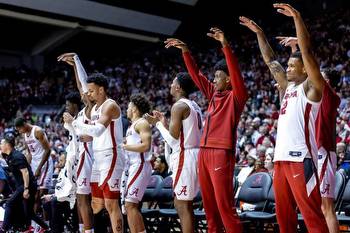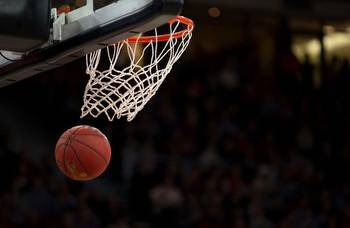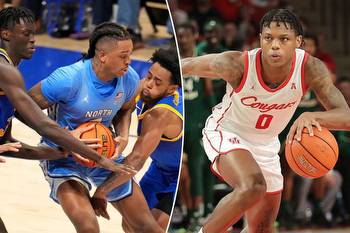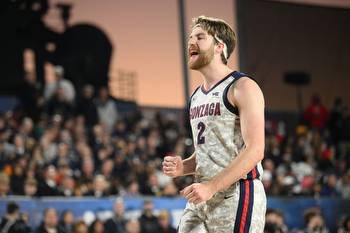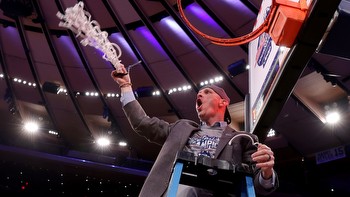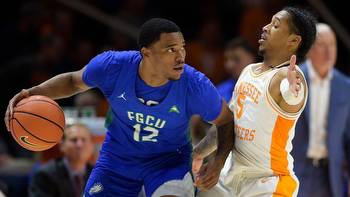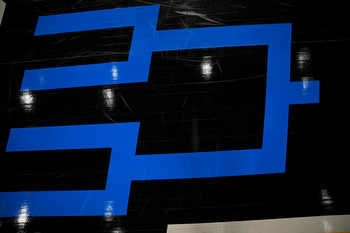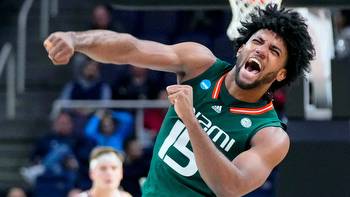Transfer portal, NIL produce parity in March Madness, college football
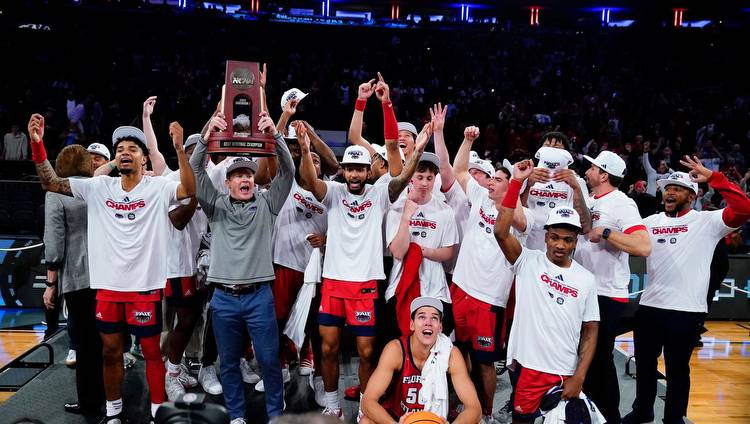
The town criers were absolute. Still are in some cases.
The immediate-eligibility rule for all NCAA transfers, coupled with the name, image and likeness revolution, would wreck competitive balance in college sports.
Parity would hit the highway.
So far, they’ve been wrong. Not just wrong. Dead wrong. Horribly wrong. Ridiculously wrong.
The men’s NCAA Tournament has established its Final Four: 4-seed Connecticut, 5-seeds San Diego State and Miami, 9-seed Florida Atlantic.
No. 1 seeds: none. No. 2 seeds: none. No. 3 seeds: none.
For the first time since seeding began in the 1979 tournament, none of the dozen teams seeded 1-3 have made the Final Four. Heck, it’s just the second time since seeding began that no teams seeded first or second advanced.
The 2011 Final Four included 3-seed Connecticut, 4-seed Kentucky, 8-seed Butler and 11-seed Virginia Commonwealth.
That 2011 tournament is the highest sum of seeds in the Final Four, 26. This 2023 field ranks second, with 23.
All when the sport is supposed to be overtaken by the rich and famous. The North Carolinas and Kentuckys and Kansases.
And indeed, the 2022 Final Four was all tradition-rich programs. Villanova, Duke, Carolina and Kansas. At least UNC was an 8-seed.
From 2007-09, 11 of the 12 Final Four teams were No. 1 or No. 2 seeds, with only third-seeded Villanova crashing the party.
This is much better. And this season occurred not despite the portal and NIL. This March Madness occurred because of the portal and NIL.
Just like every free agency movement in American sports, the talent has flattened.
San Diego State is in its first Final Four. So is Florida Atlantic. And Miami.
Only Connecticut, winner of four NCAA titles in the last quarter century, has any basketball pedigree to speak of.
Maybe it’s a coincidence. Maybe next year we’ll be back with a Final Four of UCLA and Kentucky, Michigan State and Louisville.
So then explain football. Since immediate eligibility and NIL arrived, Cincinnati has made the College Football Playoff (2021) and Texas Christian has made the national championship game (2022).
Two years ago, when doomsayers warned of death and destruction to fair play with the advent of NIL and college free agency, then-TCU coach Gary Patterson wouldn’t hear of it.
Patterson said NIL would allow the likes of TCU to keep or attract talent.
Patterson isn’t around to enjoy his prophecy – he was summarily discharged on Halloween 2021 – but he was right.
The portal and NIL have scrambled the talent bases. Sure, Alabama and Georgia football, Kentucky and Kansas basketball, have advantages that Cincinnati and Florida Atlantic can’t match.
But the movement of talent creates a form of chaos, and chaos doesn’t always return to order.
A basketball program like Miami, a football program like TCU, can find some magic in a roster makeover. A football program like Cincinnati (with Luke Fickell) or a basketball program like San Diego State, can stand tall with exquisite coaching and continuity.
And underdogs have a chance.
Don’t listen to the town criers. The portal and NIL aren’t going to kill college athletics. The opposite is true.

Thunder tiebreakers not great
The Thunder beat the Portland junior varsity 118-112 Sunday night, a game that should easily have been in the Thunder camp but was a slog the entire way.
Still, a win is a win, especially this close to the end of a playoff (or play-in) chase.
The Thunder moved into a tie for ninth in the Western Conference but stayed in the 10-seed spot, courtesy of losing the tiebreaker with the Lakers.
The Thunder better not depend on the tiebreakers for much help. It loses most of the head-to-head series this season.
The top six teams advance to the eight-team Western Conference bracket, and the next four teams advance to a play-in tournament. Seeds 7-8 play for the No. 7 seed, seeds 8-9 play to stay alive, then the winner of the 8-9 game plays at the loser of the 7-8 game, for the No. 8 seed.
The No. 6 seed seems unlikely for the Thunder, which is 37-38 and only 1½ games behind No. 6 Golden State. But jumping three teams with only seven games left in the season is an onerous task.
Especially without most of the tiebreakers.
Here are the NBA tiebreakers:
1. Head-to-head results.
2. Division winner beats non-division winner (won’t apply to the Thunder).
3. Division winning percentage for teams in the same division.
4. Conference winning percentage.
5. Winning percentage vs. own-conference playoff teams.
6. Winning percentage vs. other-conference playoff teams.
Here’s how OKC fares in the head-to-head against the other teams still in contention from fourth to 12.
Suns 39-35: Phoenix leads 2-1 but plays in Oklahoma City on Sunday. The Suns have a much better conference record (24-20, 23-25) than does OKC, but if the Thunder was to somehow catch the Suns, that would change.
Clippers: 39-36: Thunder won the season series 3-1.
Warriors: 39-37: Golden State leads 2-1 but hosts the Thunder on April 4. Golden State’s conference record of 25-21 is assured of being at least as good as OKC’s (23-25).
Timberwolves 38-37: Minnesota won the season series 3-1.
Pelicans 37-37: New Orleans won the season series 3-1.
Lakers 37-38: LA won the season series 2-1.
Mavericks 36-39: Thunder won the season series 2-1.
Jazz 35-39: Thunder leads the season series 2-1, and though OKC plays at Utah on April 6, the Thunder will have a better divisional record than the Jazz (8-7, 5-9 currently).
The Thunder has made things interesting. But OKC will not get a ton of help from tiebreakers.
The List: Big 12 basketball goes bust
The Big 12 has billed itself as the nation’s best basketball conference, and with good reason. Two straight NCAA champions. Three straight trips to the NCAA title game. All by different schools.
And the NET (NCAA evaluation tool) ranking certainly billed the Big 12 as the nation’s best.
But college basketball is a one-month sport. NCAA Tournament success determines status. What else can we ascertain from a sport with a devalued regular season and a magnificent post-season?
And the Big 12 went bust in March. Oh, maybe not bust. But no Final Four team. And not the best success among conferences.
If the Big 12 wants to still claim superiority this season, it starts sounding like Michigan State coach Tom Izzo, who after losing to Kansas State in the Sweet 16 Thursday night declared the Big Ten the nation’s best conference.
Here are the leagues (with more than one NCAA Tournament team) ranked by March Madness success:
1. Big East 10-4: A Final Four team (and favorite) in Connecticut, and Creighton almost made it. Marquette made the Sweet 16.
2. West Coast 4-2: Gonzaga went 3-1, Saint Mary’s 1-1.
3. Atlantic Coast 7-4: All the NCAA bluebloods went out early (Duke, Virginia) or didn’t make the tournament at all (North Carolina, Louisville, Syracuse), but Miami is in the Final Four.
4. Mountain West 4-3: This is a San Diego State achievement. The Aztecs are 4-0 in March Madness; the rest of the league is 0-3.
5. Big 12 9-7: Texas and Kansas State lost close regional finals. Win those games, and the Big 12 is 11-5 and still busting its buttons.
6. Southeastern 9-8: Lots of teams. Limited success. Three Sweet 16 teams; none advanced.
7. American 4-4: Houston was stunned in the Sweet 16, but good news awaits. Final Four-bound Florida Atlantic is American-bound this summer.
8. Pac-12 3-4: UCLA had two of the wins, and the Bruins leave for the Big Ten in 2024.
8. Big Ten 6-8: Not much good. Michigan State was the last team standing.
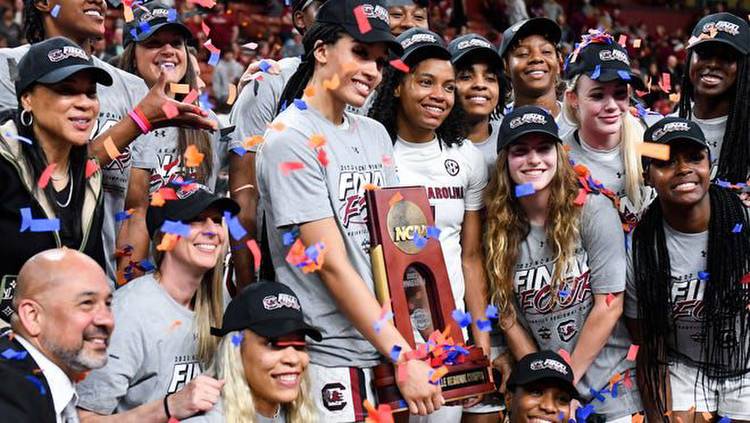
We have a March Madness bracket winner
Reader Michael Dickey won my 32 bracket game.
Dickey chose 6-seed Creighton from the South, 4-seed UConn from the West, 16-seed Northern Kentucky from the Midwest and 6-seed Kentucky from the East.
UConn produced four wins (points), Creighton three and Kentucky one. Those eight points secure the contest for Dickey.
No other contestant with a Final Four team other than UConn is still alive with at least six points.
Dickey’s strategy of avoiding top seeds worked well. Typically, going with a couple of 1- or 2-seeds is the best way to rack up wins. But in this crazy NCAA Tournament, hitting on a couple of mid-level seeds was the winner.
Lunch is on me with Michael. We’ll get it scheduled soon. And for everyone else, we’ll play again next March.
Mailbag: Junior-college recruiting
Some interesting responses resulted from my recent dispatches on the lack of men’s basketball success for the Bedlam rivals. Including this one referring to North Texas’ Tylor Perry, who came out of Spiro High School and played at Coffeyville (Kansas) Community College before going to UNT. The Eagles eliminated OSU from the National Invitation Tournament last week.
Tyler: “I have some thoughts that really upset me about the two big in-state schools. I coached juco for 13 years and was a head coach of an elite juco for some of that time. I also spent a year working for Coach (Kelvin) Sampson at OU and a year as a prep school head coach. I still follow junior college ball pretty close. Out of high school, OU and OSU should not have known who Tylor Perry was, but after about four games at Coffeyville (and probably the first scrimmage. where both undoubtedly saw him play), he should have absolutely been on their radar. After two years of juco ball, both should have been all over him. I have a little bit of knowledge of his recruitment and I do not really remember how it all went down, but I remember he was still pretty lightly-recruited for a player of his accomplishments after the national tournament. It may have heated up after that, but he wasn't like the top juco prospects. I really believe that is one of the issues with OU and OSU right now; they never sign juco guys anymore. Now, you are going to say something like ‘with the portal, you really don't need juco guys,’ or something about ‘junior colleges being watered down,’ and you are not wrong on either thing. You want to know the big difference though? Hunger. A D-I transfer isn’t coming to OU or OSU with hunger. They might go to Kentucky or Kansas with hunger, but every D-I basketball player who can really play thinks they can get clock at OU or OSU. A top juco guard is probably better for OU or OSU in a pinch than a transfer from High Point.”
Tramel: It’s a fascinating point. I assume the caliber of junior-college basketball has gone down from the heyday of 40 years ago, when the likes of Billy Tubbs and Norm Stewart and Jerry Tarkanian built great programs relying heavily on juco players.
High schools do a better job of getting students NCAA academically eligible, and there are far more desirable Division I programs than a couple of decades ago. In the portal era, there’s little reason for an academically-eligible player to choose a junior college, when he could go to any four-year school, then transfer up with the right kind of success.
But still, it’s clear that some players do fall through the cracks and could end up in a junior college. No reason not to look there.

